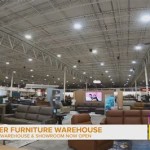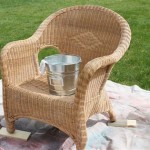Home Office Furniture Arrangement Ideas for Enhanced Productivity
Creating a functional and aesthetically pleasing home office is crucial for maximizing productivity and maintaining well-being while working remotely. Careful consideration of furniture arrangement is paramount, as it directly impacts workflow, comfort, and overall efficiency. This article provides various home office furniture arrangement ideas, focusing on optimizing space, ergonomics, and functionality.
Prioritizing Ergonomics and Comfort
Ergonomics plays a pivotal role in ensuring a comfortable and healthy work environment. Incorrect posture and poorly positioned equipment can lead to musculoskeletal issues and decreased productivity. The arrangement of furniture should prioritize proper posture, adequate support, and minimal strain on the body.
The desk should be positioned at a height that allows the user to rest their elbows comfortably at a 90-degree angle while typing. If the desk is not height-adjustable, a suitable chair can be used to achieve the desired height. The chair itself should provide adequate lumbar support and allow for adjustable height and tilt. A footrest can be beneficial for individuals with shorter legs to maintain proper leg circulation and posture.
The monitor should be positioned directly in front of the user at arm's length, with the top of the screen at or slightly below eye level. This positioning minimizes neck strain and promotes a neutral head posture. If using multiple monitors, they should be arranged in a semi-circle to reduce the need for excessive head turning. Consider using a monitor arm to adjust the height, tilt, and swivel of the monitor for optimal positioning.
The keyboard and mouse should be placed directly in front of the user to minimize reaching and strain on the wrists and shoulders. A keyboard tray can be used to bring the keyboard closer to the body and promote a neutral wrist position. A wrist rest can also provide additional support and comfort.
Adequate lighting is essential for reducing eye strain and maintaining focus. Natural light is ideal, but if unavailable, a combination of ambient and task lighting should be used. A desk lamp should be positioned to illuminate the work surface without creating glare on the monitor. Avoid overhead fluorescent lighting, which can cause headaches and eye fatigue.
Optimizing Space and Functionality
Effective space utilization is critical, especially in smaller home offices. The arrangement of furniture should maximize available space and minimize clutter, promoting a sense of order and focus. Functional considerations, such as storage needs and workflow patterns, should also be taken into account.
In a small space, a corner desk can be an excellent option, as it maximizes the use of often underutilized corner areas. A wall-mounted desk or a standing desk can also save floor space. Vertical storage solutions, such as bookshelves and wall-mounted shelves, can help keep the work surface clear and organized. Consider using storage containers and organizers to keep documents and supplies neatly stored away.
The placement of the desk should consider the proximity to power outlets and network connections. Avoid running cables across walkways, as this can create a tripping hazard. Utilize cable management solutions, such as cable ties and cable trays, to keep cords organized and out of sight. A surge protector is essential to protect electronic equipment from power surges.
Consider the workflow when arranging furniture. Place frequently used items within easy reach to minimize unnecessary movement and disruption. For example, a printer or scanner should be located close to the desk, and frequently accessed files should be stored within arm's reach. The arrangement should facilitate a smooth and efficient workflow, minimizing distractions and maximizing productivity.
In larger home offices, creating distinct zones for different tasks can improve organization and focus. A separate reading area with a comfortable chair and good lighting can provide a space for relaxation and reflection. A dedicated area for meetings or video calls can help separate work from personal life. The key is to define the purpose of each zone and arrange furniture accordingly.
Enhancing Aesthetics and Personalization
While functionality is paramount, the aesthetics of the home office should not be overlooked. A visually appealing and personalized workspace can improve mood, motivation, and overall well-being. Incorporating personal touches and creating a comfortable atmosphere can make the home office a more inviting and productive space.
Color plays a significant role in influencing mood and productivity. Calming and neutral colors, such as blues, greens, and grays, can create a sense of tranquility and focus. Avoid overly stimulating or distracting colors, such as bright reds or oranges. Consider using accent colors to add visual interest and personality to the space.
Adding plants to the home office can improve air quality, reduce stress, and create a more welcoming atmosphere. Choose low-maintenance plants that thrive in indoor environments, such as succulents, snake plants, or spider plants. Plants can be placed on shelves, desks, or in decorative pots on the floor.
Personalization is key to creating a home office that reflects the individual's unique style and preferences. Displaying artwork, photographs, or personal mementos can add character and create a more comfortable and inspiring workspace. However, it is important to avoid cluttering the space with too many items, as this can be distracting and overwhelming.
Consider the overall design style of the home when decorating the home office. A cohesive design aesthetic can create a more harmonious and visually appealing space. Choose furniture and accessories that complement the existing decor. For example, a modern home office might feature sleek, minimalist furniture and clean lines, while a more traditional home office might incorporate classic furniture and warm, inviting colors.
Good lighting is not only functional but also contributes to the overall aesthetics of the home office. Consider using a combination of natural and artificial light sources to create a well-lit and inviting space. A stylish desk lamp can serve as both a functional and decorative element. Install blinds or curtains to control the amount of natural light entering the room and prevent glare on the monitor. Smart lighting systems can also be used to adjust the color temperature and brightness of the lighting based on the time of day or the task at hand.
Investing in high-quality furniture and accessories can enhance the overall aesthetics and functionality of the home office. Choose durable and comfortable furniture that will withstand daily use. Select accessories that are both functional and visually appealing. A well-designed and thoughtfully arranged home office can be a significant investment in productivity, well-being, and overall job satisfaction.
In conclusion, effective home office furniture arrangement involves careful consideration of ergonomics, space optimization, and aesthetic preferences. By prioritizing comfort, functionality, and personalization, individuals can create a workspace that fosters productivity, reduces stress, and promotes overall well-being.

Home Office Decor Ideas Design Styling Your Workspace For Success Decorilla Online Interior

9 Essential Home Office Design Tips
:max_bytes(150000):strip_icc()/3A_office1-4644597102aa48b3840ff5d290dd4cef.jpg?strip=all)
67 Modern Home Office Ideas To Help You Get The Job Done In Style

Home Office Decor Ideas Design Styling Your Workspace For Success Decorilla Online Interior

Home Office Trends 2025 Create A Stylish Productive Space Decorilla Online Interior Design

How To Decorate An Office Modern Home Ideas For 2025 Jane At

Home Office Layout Ideas For Remote Workers Elm Workspace

Home Office Setup Ideas How To Make A In Small Space Drilliourneys

6 Desk Layout Ideas For The Perfect Home Office Setup Blog Perry Homes

75 Home Office Ideas You Ll Love August 2025 Houzz




